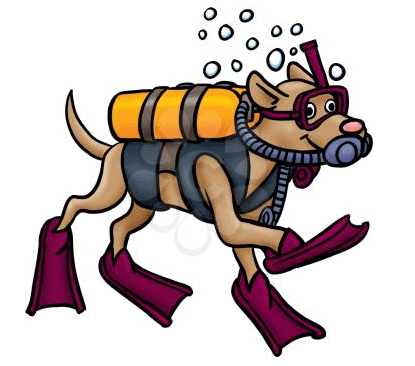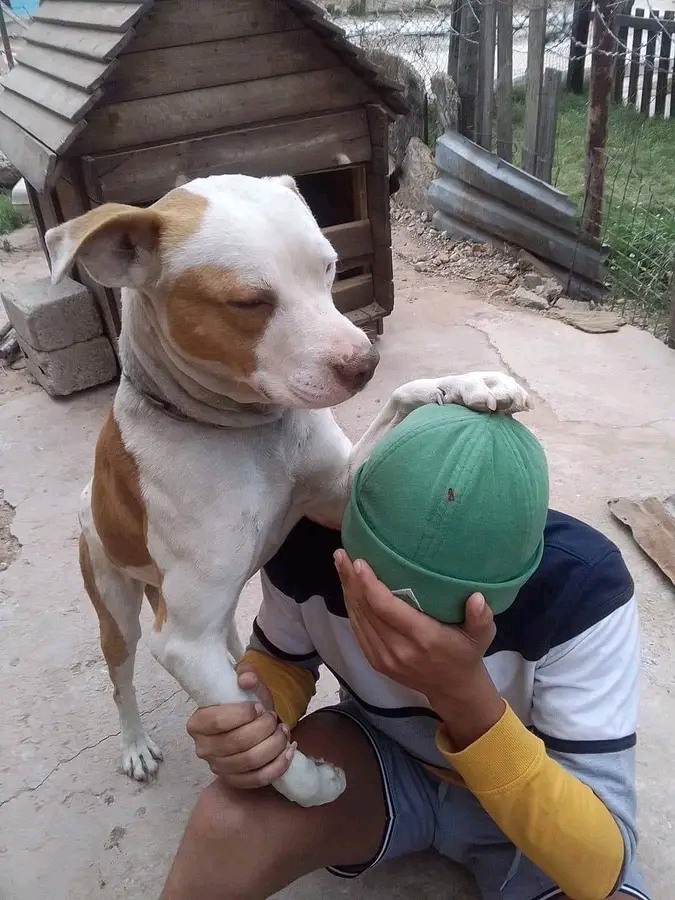Teaching Your Dog Impulse Control With Case Study of MotherCoconuts(coco)
Teaching Your Dog Impulse Control: Impulse control refers to a dog’s ability to resist immediate reactions to stimuli and instead exhibit patience and restraint. In everyday life, this means teaching your dog to think before acting. Common scenarios where a lack of impulse control becomes evident include jumping on guests as they enter your home, darting out the front door the moment it’s opened, or grabbing food off counters. For instance, imagine your dog waiting calmly at the door instead of bolting out at the first opportunity, or sitting politely when guests arrive rather than leaping on them excitedly. These situations showcase the importance of developing impulse control in your dog.
Benefits of Teaching Your Dog Impulse Control: Teaching Your Dog Impulse Control training offers significant advantages, creating a safer and more harmonious household. When your dog can control impulses, it reduces the risk of accidents, such as running into the street or knocking over a guest. Moreover, a dog with good impulse control tends to exhibit better overall behavior, making daily interactions more pleasant. This training also strengthens the bond between you and your dog. When your dog trusts and respects your guidance, it leads to a deeper connection and mutual understanding. For example, teaching your dog to wait for a command before eating reinforces discipline and patience, making meal times smoother and more enjoyable.
Teaching Your Dog Impulse Control is more than just a training exercise; it’s a foundational skill that enhances your dog’s ability to live safely and harmoniously within your home. By focusing on this aspect of behavior, you can cultivate a well-mannered, responsive, and happier dog, enriching both your lives in the process.
2. Key Methods for Teaching your Dog Impulse Control
Positive Reinforcement: The principle of positive reinforcement is central to effective dog training. It involves rewarding your dog when it displays the desired behavior, thereby encouraging the repetition of that behavior. For instance, when your dog waits patiently at the door instead of bolting out, offering a treat, toy, or praise reinforces this good behavior. Imagine your dog sitting calmly while you prepare its meal. By consistently rewarding this patience, your dog learns that waiting brings positive outcomes. Positive reinforcement not only teaches impulse control but also builds a trusting and cooperative relationship between you and your dog.
Consistency and Patience: Training a dog requires consistency and patience. Regular practice is crucial, but training sessions should be short and frequent to prevent your dog from becoming overwhelmed. For example, practicing impulse control for a few minutes several times a day can be more effective than a long, single session. Patience is equally important. Dogs learn at different paces, and staying calm and persistent is essential. If your dog doesn’t get it right away, don’t get discouraged. With time and consistent effort, your dog will start to understand and exhibit the desired behaviors.
3. Step-by-Step Exercises
The Waiting Game: Objective: Teach patience by making the dog wait for a treat.
Steps:
- Hold a treat and let your dog sniff it. This gets their attention and interest.
- Say “Wait” and only give the treat when your dog backs off, even if it’s just for a moment.
- Gradually increase the wait time before rewarding. Over time, your dog will learn to wait patiently for the treat.
This exercise teaches your dog to control its impulses and be patient, leading to better overall behavior.
Leave It: Objective: Train the dog to ignore forbidden items.
Steps:
- Show your dog a treat and say “Leave it” while placing it under your shoe.
- Reward your dog when it stops trying to get the treat. This reinforces the idea that ignoring the treat leads to a positive outcome.
- Progress to leaving the treat uncovered, reinforcing the command each time your dog ignores the treat.
The “Leave it” command is valuable in many real-life situations, such as when your dog encounters something potentially harmful on the ground.

Sit and Wait: Objective: Improve self-control in the presence of temptations.
Steps:
- Command your dog to sit. Ensure your dog is focused and calm.
- Place a toy or treat nearby and make your dog wait. The proximity of the temptation tests your dog’s impulse control.
- Release your dog to get the toy or treat after it remains calm and seated for a set period.
This exercise enhances your dog’s self-control and reinforces the importance of following commands, even when tempted.
Fetch with Restraint:
Objective: Teach restraint during play.
Steps:
- Have your dog on a leash and throw a toy. This gets your dog excited and ready to chase.
- Hold the dog back until it hesitates or sits. This pause teaches your dog to wait and control its immediate reaction.
- Release the dog to fetch only when it stays calm and follows the command. Over time, your dog will learn that staying calm leads to playtime.
This exercise is particularly useful for high-energy dogs that tend to dash after anything thrown. It teaches them to wait for your signal, which can be essential for safety and control during play.
Tug and Stop:
Objective: Control excitement during interactive play.
Steps:
- Start a game of tug with your dog. Engage them with a toy and get them excited about the game.
- Suddenly stop and ignore the dog until it calms down. This break in play signals to your dog that they need to settle before the game continues.
- Resume play once the dog is calm, reinforcing the need to settle down to continue the game.
This technique helps your dog learn that calm behavior is rewarded with more play, making it a fun and effective way to Teaching Your Dog Impulse Control.
4. Advanced Impulse Control
Gradual Challenges: To further develop your dog’s impulse control, gradually increase the difficulty of training exercises. Introduce distractions, like having other people or pets around, or extend waiting times before giving the reward. Practicing in different environments, such as parks or busy streets, helps your dog generalize the behavior and apply impulse control in various situations.
Real-Life Applications: Apply impulse control training to everyday situations to make it more practical and effective. For example, teach your dog to wait at doors instead of rushing out, to sit calmly during mealtime until given the command to eat, and to stay composed when guests arrive. Use controlled exposure to distractions to strengthen your dog’s impulse control. For instance, practice having your dog sit and wait while people walk by or during a lively game.
By Using these advanced techniques and real-life applications, you’ll help your dog master impulse control, making daily life more manageable and enjoyable for both of you. Consistent practice and positive reinforcement will solidify these skills, ensuring your dog remains calm and well-behaved in various settings.
approach teaches your dog that gentle play is rewarding and that rough behavior ends the fun.
5. Troubleshooting Common Issues
Overexcitement: Managing overexcitement in dogs can be challenging, especially when it comes to jumping and barking. One effective technique is to redirect your dog’s attention to a more appropriate behavior. For instance, if your dog starts jumping on guests, you can instruct them to sit and reward them with treats or praise when they comply. This shift in focus helps your dog understand that calm behavior leads to positive outcomes. Additionally, using time-outs or turning away from your dog when they jump can discourage this behavior. For example, if your dog jumps on you, simply turn your back and ignore them until they calm down, then reward them for their calmness.
Snappy Play: Teaching Your Dog Impulse Control gentle play is essential to prevent your dog from using their teeth on your skin. If your dog gets too rough during play, stop the game immediately. This pause in play signals that rough behavior is unacceptable. When your dog plays gently, reinforce this behavior with treats and praise. Gradually extend playtime as your dog learns to control their excitement and play more gently. This approach teaches your dog that gentle play is rewarding and that rough behavior ends the fun.
6. Conclusion
Consistency is Key: Regular practice and consistency are crucial for successful impulse control training. Dogs thrive on routine and clear expectations, so maintaining a consistent training schedule will help solidify their new behaviors. Make sure to practice impulse control exercises daily, even if only for a few minutes at a time. Consistency reinforces the lessons and helps your dog understand what is expected of them.
Celebrate Progress: Celebrate small victories and remain patient through setbacks. Training a dog is a journey, and progress can sometimes be slow. Acknowledge and reward your dog’s improvements, no matter how small. Celebrating these milestones keeps you motivated and helps your dog understand that they are on the right track.
Continued Learning: Teaching Your Dog Impulse Control doesn’t stop once your dog has mastered the basics. Continued learning and practice are essential to maintaining these skills. Explore additional resources such as training books, online courses, or professional trainers to keep your dog’s skills sharp. Joining a dog training group or community can also provide ongoing support and new ideas for training.
You and your dog can achieve lasting success in impulse control training by troubleshooting common issues, staying consistent, celebrating progress, and continuing to Teaching Your Dog Impulse Control. This journey not only improves your dog’s behavior but also strengthens the bond between you, leading to a more harmonious and enjoyable life together.
Case Study: Teaching Mother Coconuts Impulse Control
Intro: Meet Mother Coconuts, a lively Cockapoo owned by Jodain. Despite her affectionate nature, Mother Coconuts struggled with Teaching Your Dog Impulse Control. She would often jump on guests, dart out the door, and grab food from counters. Jodain decided it was time to address these behaviors to create a safer and more harmonious home.
Teaching Your Dog Impulse Control: Jodain learned that impulse control involves teaching Mother Coconuts to resist immediate reactions and exhibit patience. Recognizing scenarios like jumping on guests and darting out the door as signs of poor impulse control, Jodain understood the importance of this training for their daily life.
Benefits of Teaching Your Dog Impulse Control: Jodain saw the potential for a safer home and a stronger bond with Mother Coconuts. By teaching her patience and restraint, Jodain knew they could improve her overall behavior and create a more pleasant living environment.
Key Methods for Teaching Impulse Control: Using positive reinforcement, Jodain rewarded Mother Coconuts with treats and praise whenever she displayed desired behaviors, such as sitting calmly when guests arrived. Consistency and patience were vital, with short, frequent training sessions becoming part of their daily routine.
Step-by-Step Exercises:
The Waiting Game: Objective: Teach patience by making Mother Coconuts wait for a treat. Steps:
- Jodain held a treat and let Mother Coconuts sniff it.
- Saying “Wait,” Jodain only gave the treat when Mother Coconuts backed off, even momentarily.
- Over time, they increased the wait time before rewarding, teaching patience.
Leave It: Objective: Train Mother Coconuts to ignore forbidden items. Steps:
- Jodain showed her a treat, said “Leave it,” and placed it under a shoe.
- Mother Coconuts was rewarded when she stopped trying to get the treat.
- They progressed to leaving the treat uncovered, reinforcing the command each time she ignored the treat.
Sit and Wait: Objective: Improve self-control in the presence of temptations. Steps:
- Jodain commanded Mother Coconuts to sit.
- Placing a toy nearby, Jodain made her wait.
- She was only released to get the toy after remaining calm and seated for a set period.
Fetch with Restraint: Objective: Teach restraint during play. Steps:
- Jodain had Mother Coconuts on a leash and threw a toy.
- Holding her back until she hesitated or sat.
- Releasing her to fetch only when she stayed calm.
Tug and Stop: Objective: Control excitement during interactive play. Steps:
- Starting a game of tug, Jodain would suddenly stop.
- Ignoring Mother Coconuts until she calmed down.
- Resuming play once she was calm, reinforcing the need to settle down.
Advanced Teaching Your Dog Impulse Control: Jodain gradually increased the difficulty by adding distractions and practicing in different environments, ensuring Mother Coconuts could generalize the behavior.
Troubleshooting Common Issues: To manage overexcitement, Jodain redirected Mother Coconuts’ attention and used time-outs for jumping. For snappy play, Jodain stopped the game when Mother Coconuts used teeth on skin and reinforced gentle play with treats and praise.
Conclusion: Through consistent practice, celebrating progress, and continued learning, Jodain successfully improved Mother Coconuts’ Teaching Your Dog Impulse Control. The training Teaching Your Dog Impulse Control not only enhanced her behavior but also strengthened their bond, creating a more harmonious and enjoyable life together. Mother Coconuts learned to wait patiently, ignore temptations, and play gently, making her a well-mannered and happier dog.




Leave a Reply